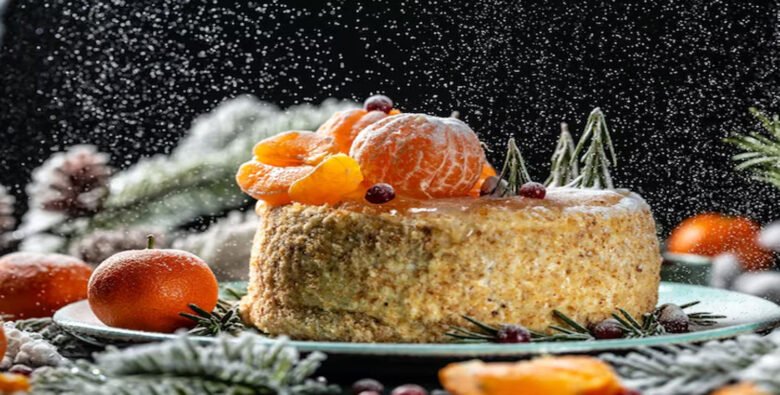The holiday season is a time for gathering, celebrating, and, of course, enjoying delicious food. In many cultures around the world, food plays an integral role in holiday traditions, and France is no exception. One of the most delightful aspects of French Christmas celebrations is the gâteaux de Noël, or Christmas cakes, which are not only delicious but also beautifully crafted. These cakes represent the flavors, creativity, and rich culinary heritage of French holiday traditions.
In this article, we will explore the history and significance of gâteaux de Noël, discover some of the most popular Christmas cakes enjoyed in France, and learn about the techniques and ingredients that make these desserts so special. Whether you are planning to try making one of these festive treats or simply want to learn more about this sweet holiday tradition, this guide will provide a comprehensive look at the role of cakes in French Christmas celebrations.
The Tradition of Gâteaux de Noël

The tradition of baking cakes and other sweets for Christmas has been around for centuries. In France, Christmas is a time for family gatherings, and food is central to these celebrations. The French have a long history of crafting elaborate desserts, and gâteaux de Noël are no exception. Each region of France has its own unique take on the Christmas cake, using locally available ingredients and following time-honored recipes that have been passed down through generations.
The French approach to Christmas desserts is characterized by attention to detail, artistic presentation, and a balance of flavors that combine the richness of the holiday season with the elegance of French pastry arts. From the famous Bûche de Noël to regional specialties, these cakes are often made with premium ingredients, such as rich butter, dark chocolate, chestnuts, and seasonal fruits, which add depth and complexity to the flavor profiles of these beloved treats.
Popular Gâteaux de Noël in France
There are many different gâteaux de Noël that can be found across France during the Christmas season, each with its own regional touch. Below, we’ll explore some of the most popular cakes that are often seen at French holiday tables.
1. Bûche de Noël (Yule Log)
Arguably the most iconic of all gâteaux de Noël, the Bûche de Noël is a traditional Christmas cake that is shaped like a log. Its origins date back to the 19th century, inspired by the ancient tradition of the Yule log—a large wooden log that was burned in the hearth as part of Christmas celebrations. In France, the Bûche de Noël was initially a way to replicate this tradition in cake form.
The cake is made of a light and airy sponge cake that is rolled into a log shape and filled with buttercream, often flavored with chocolate, coffee, or chestnut. The outside of the cake is traditionally decorated to resemble the bark of a tree, and it may be adorned with edible decorations such as marzipan mushrooms, holly leaves, and sugar snowflakes. The Bûche de Noël is often served at Christmas Eve dinners and is the centerpiece of many French holiday dessert tables.
2. Galette des Rois (King Cake)
Though Galette des Rois is primarily associated with Epiphany, which is celebrated on January 6th, this cake often continues to make an appearance at holiday celebrations throughout the Christmas season in some parts of France. The Galette des Rois is a puff pastry cake filled with almond cream (frangipane) and is traditionally eaten during the period between Christmas and Epiphany.
The cake is symbolic of the Three Kings who visited the baby Jesus, and hidden inside the cake is a small figurine or “fève.” The person who finds the fève is crowned king or queen for the day and is expected to host the next celebration. The Galette des Rois is not only delicious but is also a fun and interactive part of the French holiday tradition.
3. Pain d’Épices (Gingerbread Cake)
While not as famous as the Bûche de Noël, Pain d’Épices is another traditional French cake that is often associated with Christmas. This spiced gingerbread cake is rich with flavors of honey, cinnamon, cloves, and nutmeg, and it often includes a variety of dried fruits and nuts.
In some regions, Pain d’Épices is made into decorative shapes, such as stars or hearts, and is sometimes iced with royal icing. The cake has a dense and moist texture, and it is often served as part of a holiday breakfast or afternoon tea. This cake is particularly popular in the eastern regions of France, such as Alsace, where gingerbread has a long history as a holiday treat.
4. Tarte Tatin (Caramelized Apple Tart)
While Tarte Tatin is typically considered a dessert for fall, its decadent, caramelized apples make it a fitting choice for the winter months as well. This upside-down tart is made with butter, sugar, and apples, which are caramelized together before being baked with a puff pastry top. The result is a sweet, buttery tart with tender fruit and a rich caramel flavor.
Though Tarte Tatin is more commonly enjoyed as a fall dessert, it is often seen as a comforting choice during the winter and holiday season, making it a popular option for French holiday dinners. It can be served warm, with a dollop of whipped cream or a scoop of vanilla ice cream for added indulgence.
5. Mendiants
Mendiants are small, round chocolate discs topped with a variety of nuts and dried fruits, such as almonds, hazelnuts, raisins, and dried figs. These treats are often associated with Christmas in France, particularly in the Provence region. Mendiants are named after the French word for “beggars” because the different ingredients represent the four monastic orders: almonds for the Carmelites, hazelnuts for the Augustinians, figs for the Franciscans, and raisins for the Dominicans.
These simple yet elegant treats are a popular addition to holiday gift boxes or served as a festive snack at family gatherings. They are easy to make and are a great way to combine the richness of chocolate with the textures of dried fruits and nuts.
The Ingredients and Techniques Behind Gâteaux de Noël
Creating gâteaux de Noël requires a mix of traditional techniques and quality ingredients. Whether baking a Bûche de Noël or a Pain d’Épices, French holiday cakes rely on specific ingredients that contribute to their flavor, texture, and elegance. Here are some of the key ingredients and techniques that are commonly used in making these delightful Christmas cakes:
1. Butter
Butter is a crucial ingredient in many French cakes, and it is especially important in gâteaux de Noël. The richness of butter enhances the flavor of the cake and gives it a smooth, velvety texture. French butter, known for its high fat content and rich taste, is often preferred for holiday baking.
2. Chocolate
Chocolate is another essential element in many gâteaux de Noël, particularly in the Bûche de Noël. Dark chocolate is commonly used for ganaches, buttercream fillings, and decorations. The intense flavor of chocolate pairs perfectly with the sweetness of the cake and adds a luxurious touch to holiday desserts.
3. Chestnuts
Chestnuts are a popular seasonal ingredient in France, especially during Christmas. They are often used in the filling of a Bûche de Noël or incorporated into other holiday desserts, such as crèmes de marrons (chestnut cream). The rich, nutty flavor of chestnuts adds depth to the cakes, and their soft texture provides a nice contrast to the other ingredients.
4. Almonds and Hazelnuts
Almonds and hazelnuts are often used to add crunch and flavor to French holiday cakes. Whether in the Galette des Rois or Pain d’Épices, these nuts bring a delightful texture to the cakes and complement the spiced and sweet elements.
5. Puff Pastry and Sponge Cake
Many French Christmas cakes require special techniques, such as making light, airy sponge cakes for the Bûche de Noël or creating crisp, flaky puff pastry for cakes like the Galette des Rois. Mastering these techniques requires practice, but the results are well worth the effort when creating these delicious holiday cakes.
Conclusion
The tradition of gâteaux de Noël is a cherished part of French Christmas celebrations. From the iconic Bûche de Noël to regional specialties like Pain d’Épices and Galette des Rois, these cakes represent the richness of French pastry-making and the spirit of the holiday season. Whether you are enjoying these festive treats with family and friends or trying your hand at baking one of them yourself, gâteaux de Noël are a delicious way to celebrate Christmas and indulge in the warmth and joy of the season.
More Read
Exploring the Toll-Free Number 866-496-7202: Its Significance and Common Uses



